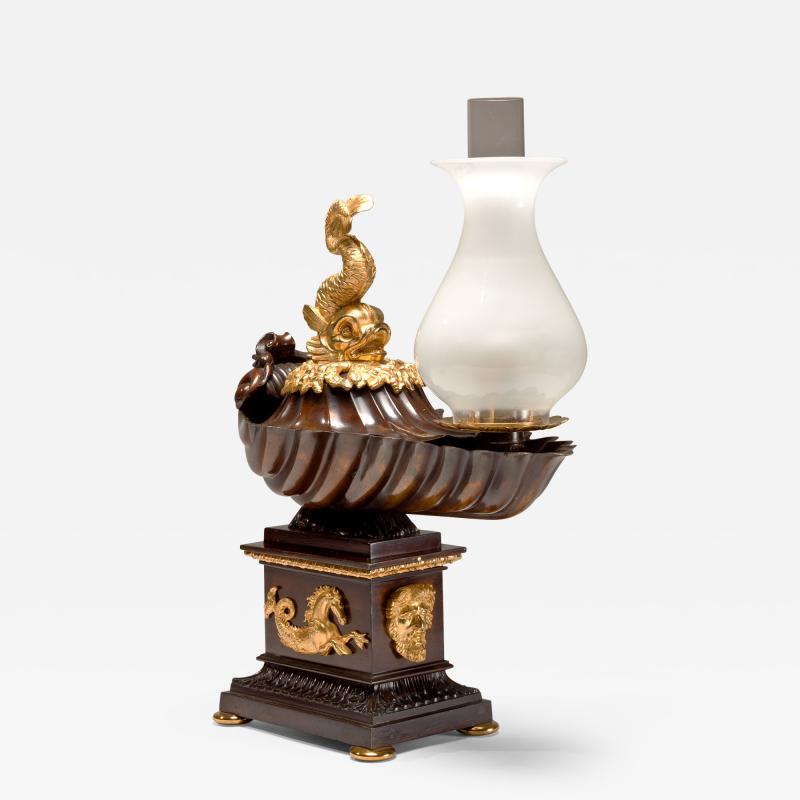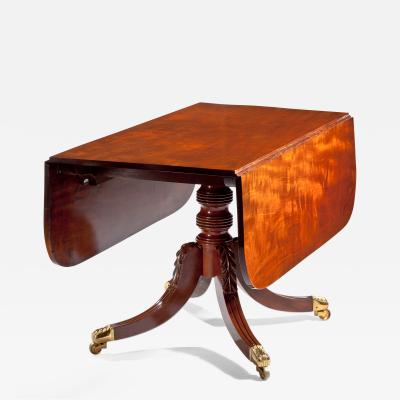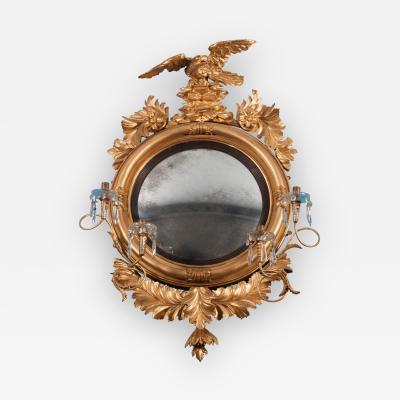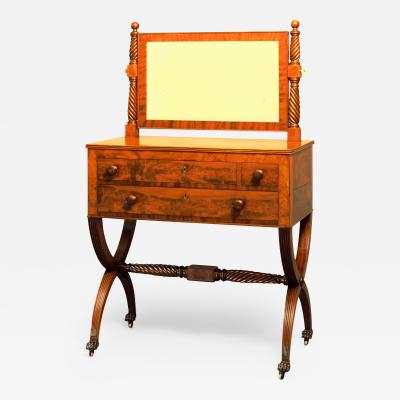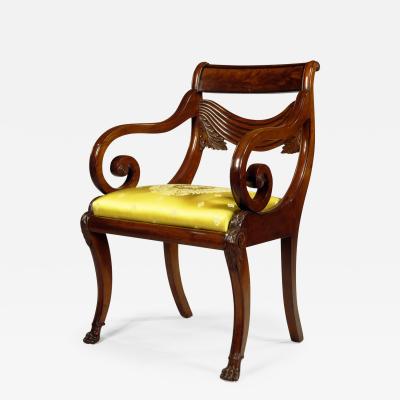Listings / Furniture / Lighting / Table Lamps
Bronze Argand Lamp in the Form of an Ancient Shell-Shaped Oil Lamp
-
Description
GEORGE IV PATINATED AND LACQUERED BRASS ARGAND LAMP
SURMOUNTED BY A GILDED DOLPHIN
Labeled: Johnston Brookes & Co.,/ Manufacturers/ London
London, c. 1830
Geneva-born philosopher and inventor Francois-Pierre-Ami Argand (1750-1803), received a British patent for his lamps, developed a few years earlier in Paris, on March 15th, 1784 (patent no. 1425). His invention which promised "a lamp that is so constructed to produce neither smoak [sic.] nor smell, and to give considerably more light than any lamp hitherto known" consisted of a tubular wick held between metal tubes with a central air vent, a rack and pinion wick riser assembly and a tall, narrow chimney that fit closely around the wick causing hot air to be drawn up through the center of the flame as well as around its outside creating more thorough combustion. It was designed to burn rape-seed (colza) and whale oil, issuing from an oil reserve or “font” positioned so that the oil would flow from the force of gravity to the burner.
Argand's invention, developed initially with Matthew Bolton, George Penton and James Watt in England, was subsequently manufactured by a host of makers in Birmingham including Messenger, Johnston-Brookes, Phipson & Lambley, Fletcher & Day, T.C. Salt and Ratcliff. Johnston Brookes was located at 32 New Street Square, Fetter Lane, London in the 1820's and were the successors to George Penton.
Hailed by Rees in his encyclopedia of 1819 The Universal Dictionary of Arts, Sciences, and Literature saying "it may be justly ranked among the greatest discoveries of the age" and by Benjamin Franklin who noted it was "much admired for its splendor," Argand's invention was the most important advancement in home lighting since the discovery of fire.
The design of Argand lamps took many forms, usually inspired by such widely-known images of classical antiquity as those published by Giovanni Battista Piranesi, a veritable lexicon of classical symbols, or drawn, in the same spirit, from Greek and Roman myths. Piranessi's 1769 publication Diverse Maniere D'Adornare I Cammini and his highly influential 1778, Vassi, candelabri, cippi, sarcofagi, tripodi, lucerne, ed ornamenti antichi...each show material from which the present lamp might have been drawn including ancient oil lamps and a closely related dolphin. -
More Information
Origin: England Period: 19th Century Materials: Brass and Glass. Condition: Excellent. Glass shade & chimney replaced, electrified. Creation Date: c. 1830 Styles / Movements: Regency, George IV, Neoclassical Incollect Reference #: 117696 -
Dimensions
W. 13 in; H. 15 in; D. 6.5 in; W. 33.02 cm; H. 38.1 cm; D. 16.51 cm;
Message from Seller:
Welcome to Carswell Rush Berlin Antiques, a premier New York City-based dealer specializing in American antique furniture and decorative accessories from the Classical period (1800-1840). For inquiries, please contact us at 646.645.0404 or email carswellberlin@msn.com.
Sold















